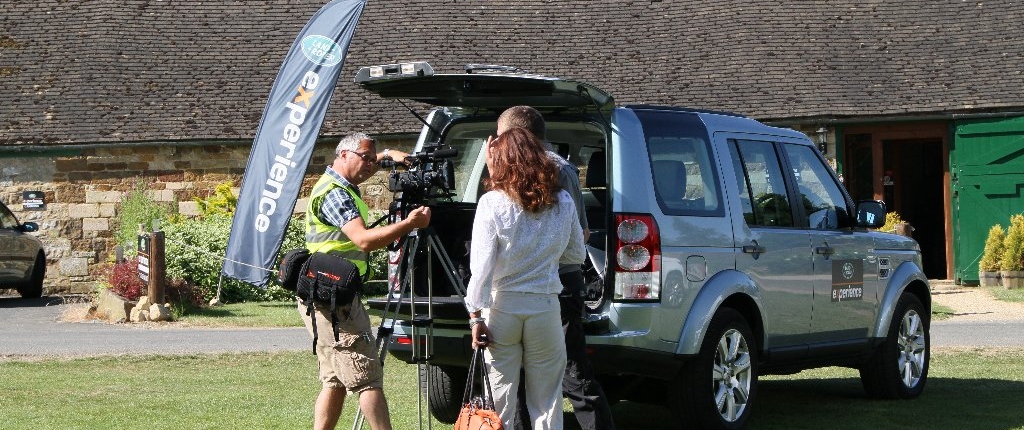The simple answer is it depends. There are many factors that influence cost and numerous variables that need to be considered.
Broadly speaking, the amount of preparation prior to filming, the number of filming days, the quality of filming equipment,
the complexity of the post production and the amount of extras such as; voice-over, 3D graphics, CGI and drone filming all influence the cost calculation.
In the UK a corporate video can cost anything from £500 to in excess of £20,000.
In practice, most corporate videos produced for on-line use range from £1500 to £4000 (all costs quoted +VAT).
Here are the main factors that contribute to the variation in corporate video cost:-
- Style required for target audience
- Type of filming equipment
- The experience and ability of the crew
- The filming location(s)
- Number of filming days
- Complexity of the post production (editing, colour grading etc)
- The duration of the completed video
- Extras; script writing, voice-over, 3D graphics, CGI, cranes, motion control equipment Closed Captions and drone filming etc
Corporate video has never been so accessible or as vital as it is today. Hopefully the brief explanation of these points will help you on the right road to understanding how you can best use your video marketing budget to maximize the benefit to your company.
Style required for target audience
The quality that is appropriate to represent your company will depend on your sector, target audience and how you want to be perceived as a company. Most companies spend more on outward facing videos than those intended for internal use. Internal training or communications videos need to have quality audio and a clearly delivered message but they don’t need to be produced in a cinematic style.
For any video project, find some video examples that you like and discuss the scope with your video producer to see if it matches your budget.
Type of filming equipment
Modern professional video equipment has improved dramatically in the 12 years I have been in video production. My first professional camera had a resolution of 720 x 576 pixels, our current cameras are 4K with a resolution of 4096 x 2160 pixels, an improvement of 22 times. Portable lighting technology has also improved dramatically. These are only the starting point, there are numerous techniques and pieces of equipment that can increase the video production to a cinematic level, providing a high quality feel to the video. High level equipment is of no benefit unless the crew have the skill and appropriate time to get the required results.
The experience, knowledge and ability of the crew
When choosing a video producer it can be a false economy to go with the cheapest. There will be a reason why they have the lowest cost; lack of training or experience, lack of ability, inferior equipment, poor reputation. You might find the end results don’t match your expectations and leaves you with a video that doesn’t represent your company appropriately.
The flip-side of this choice is a video producer that can add value to the overall process, not only on the technical side but help with interviewing skills and creative insight to enhance the message to the target audience.
The filming location(s)
Not only is the travel distance a factor, but if an early start is required in Central London an overnight stay might be the safest way to ensure filming starts without delay. It’s worth the hotel cost to safeguard the filming opportunity. Alternatively, if filming can start later and run into the evening, it could be a more cost-effective solution.
Filming interviews across multiple locations (even within the same building) will take time for the crew to relocate and set up the equipment each time. This is time that wont be used for filming so it’s vital the time available and number of locations required are carefully balanced to ensure all the interviews are captured.
Number of filming days
Clearly the number of filming days will have a pro-rata effect on the cost. The key is to plan and prepare for your filming day to ensure things run smoothly to capture all the required footage. However, it is important to discuss the day with your producer beforehand to keep the expectations realistic. In some cases, filming on two consecutive days can save the crew time in packing kit away, then preparing and setting up again for a separate filming day. This enables the filming to run on for longer and start earlier on the second day. This works especially well if there is a large amount of equipment required for the filming set up.
Complexity of the post production (editing, colour grading etc)
The most simple corporate video would be one person talking-to-camera for the full duration of 3 minutes without faltering. In practice that very rarely happens (unless they are experienced at using a Teleprompter). This would be very simple to edit and optimise for viewing.
Even if someone achieved this, it isn’t usually the format that companies want for their corporate video. In practice, the interviews are not word perfect and produce several times the length of content that is needed for the end product. In addition to this there is usually a mass of “B” Roll that has been filmed to illustrate the corporate message. The post production process then has to make the interviews sound fluent, ensure each contributor’s message works in the combined mix and edit the “B” Roll footage to support the aim of the video and produce a powerful, visually stimulating film. Creating the latter style is far more work but necessary to turn the raw footage into a powerful video.
The duration of the edited video
People sometimes ask me “How much is a 3 minute video”? If you have read any of the above you will already know that it depends on a lot of variable factors and there is no single answer.
However, the relationship between the cost and length of a corporate video is not always linear. The reason being that although a 30 minute video generally has more work (and cost) than one lasting 5 minutes, it can also take a disproportionate amount of post production time to reduce 30 minutes of content down to 5 minutes, whilst preserving the impact of the message.
To illustrate the apparent contradiction further; a 3 minute case study video with interviews and “B” Roll might cost £1500 but a 12 minute training video might only be £1750. The reason of course is the work involved to film and edit both and their resulting appearance is very different.
Extras; script writing, voice-over, 3D graphics, CGI, cranes, motion control equipment Closed Captions and drone filming etc
There are many other options or extras that can be included in a video project and the key point is to consider all options with the intended video purpose. Is the additional cost value-for-money and is it in keeping with the desired company image and the target audience?
If you find a production company or videographer you can trust, you should have an open discussion with them to establish which extras suit the project and where the budget is best spent.
I have written another article called How much does a corporate video cost? – Part 2 which covers other factors influencing the cost of a corporate video. You can find this in documents on my LinkedIn profile or on our website.
You can find even more information in Part 2.
If I have still left you with unanswered questions about video production cost then please feel free to contact me and I will do my best to answer your questions.






